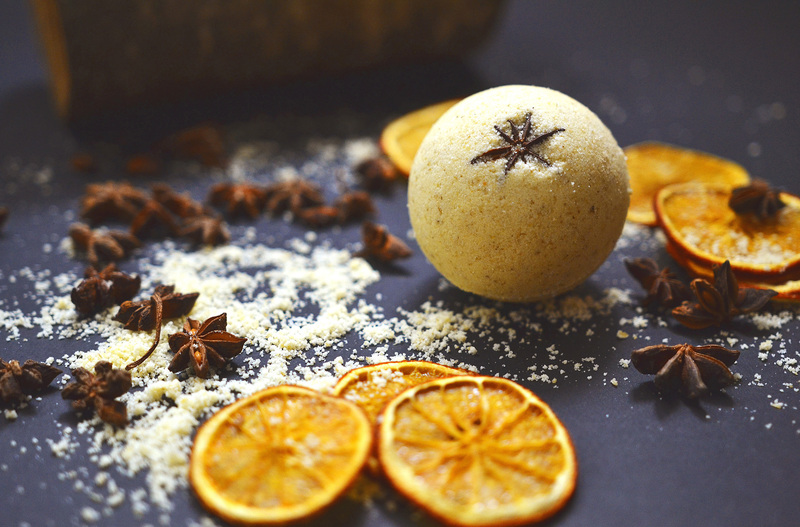Mastering the Art of Cleaning Curtains Effectively
Posted on 26/05/2025
Mastering the Art of Cleaning Curtains Effectively
Cleaning curtains effectively is an essential household task that is often overlooked. Yet, keeping your drapes fresh and free from dust, odours, and allergens not only improves the appearance of your home but also enhances indoor air quality. In this comprehensive guide, you'll discover the best practices for cleaning curtains, explore a variety of curtain fabrics, learn cleaning techniques, and find expert maintenance tips to master the art of curtain care.
Why Cleaning Curtains Matters
Many people invest in beautiful curtains to complement their home decor but neglect regular maintenance. Curtains act as filters, trapping dust, pollen, pet hair, and airborne particles. Over time, this buildup can affect your home's cleanliness and even cause allergic reactions or respiratory issues.
- Improved Air Quality: Removing dust and allergens helps prevent health issues and allergies.
- Enhanced Aesthetics: Clean curtains contribute to a fresher, brighter room.
- Prolonged Lifespan: Regular curtain cleaning preserves fabric integrity and color vibrancy.
- Odor Elimination: Curtains can harbour odours from cooking, pets, and cigarette smoke.
If you want to master curtain cleaning skills, regular care is a must. Let's look at how to start.

Understanding Your Curtains: Fabric Types and Care Labels
Before diving into the cleaning process, it's crucial to identify your curtain fabric type. Not all curtains are created equal. Some materials require delicate handling, while others can withstand machine washing or even dry cleaning. Here's a breakdown of common curtain fabrics:
- Cotton Curtains: Compatible with machine or hand washing; may shrink if not pre-shrunk.
- Linen Curtains: Natural, breathable fabric; benefit from gentle hand wash or professional cleaning.
- Polyester Curtains: Durable, resistant to wrinkles; simple to machine wash and dry.
- Silk Curtains: Delicate, luxurious; only suitable for dry cleaning.
- Velvet Curtains: Thick, heavy, luxurious; require professional treatment or careful vacuuming.
- Sheer/Voile Curtains: Lightweight, delicate; can often be hand washed.
Tip: Always check the manufacturer's care label before cleaning curtains. Ignoring these instructions may result in permanent damage or fading.
What To Look For on Care Labels
- Washing Instructions: Indicate if curtains are machine washable, hand washable, or dry clean only.
- Temperature Settings: Specify safe washing and ironing temperatures.
- Warnings: Such as "do not bleach" or "do not tumble dry."
Essential Tools and Supplies for Curtain Cleaning
Set yourself up for success with these curtain cleaning basics:
- Vacuum Cleaner with upholstery attachment
- Mild Laundry Detergent (fragrance-free for sensitive fabrics)
- Stain Remover (fabric-specific)
- Gentle Brushes or Sponges
- Spray Bottles
- Iron or Garment Steamer for crease removal
How to Clean Curtains Effectively: Step-by-Step Guide
Step 1: Remove Curtains with Care
Gently unhook or unclip the curtains. Remove any hooks, rings, or trims and set them aside. Check each panel for loose hems or damage and repair as needed before starting the cleaning process.
Step 2: Dust and Vacuum Thoroughly
Before washing, use a vacuum cleaner with a soft brush attachment to remove surface dirt, dust, and cobwebs. For effective curtain cleaning, don't forget to vacuum both sides of the fabric and pay special attention to pleats and folds.
Step 3: Spot Clean Stains
Inspect your curtains for any visible stains. Use a gentle fabric stain remover or a homemade solution (mild soap and water or diluted white vinegar). Blot rather than rub the stain to avoid fabric damage or spreading.
Step 4: Choose the Right Washing Method
Machine Washing Curtains
- Check if your fabric is machine washable.
- Use a gentle cycle with cold or lukewarm water.
- Wash curtains alone or in pairs to avoid overcrowding.
- Add a small amount of mild detergent.
- Avoid bleach unless the care label indicates it is safe.
Hand Washing Curtains
- Fill a large basin or bathtub with cool, soapy water.
- Submerge curtains and gently agitate them with your hands.
- Let curtains soak for 10-15 minutes.
- Rinse thoroughly until water runs clear.
Dry Cleaning Curtains
- If your curtains are labeled "dry clean only," do not attempt washing at home.
- Take them to a reputable dry cleaner with curtain experience.
- Mention any specific stains for targeted treatment.
Step 5: Dry Curtains Properly
- Hang curtains to air dry, preferably outdoors or in a breezy room.
- For machine-dryable curtains, use the lowest heat setting.
- Iron or steam to remove wrinkles while still slightly damp for best results.
Top Tips for Specialized Curtain Cleaning
How to Clean Blackout Curtains
Blackout curtains have a vinyl or acrylic backing for light blocking and may be extra-sensitive to moisture and heat. For effective blackout curtain cleaning:
- Spot clean stains with a damp sponge and mild detergent.
- Vacuum the fabric side to remove dust.
- Avoid machine washing unless label confirms it's safe.
- Air dry flat to prevent backing from cracking.
Refreshing Sheer or Lace Curtains
Sheers are fragile and prone to snagging. To clean sheer curtains:
- Hand wash in lukewarm, soapy water.
- Use a laundry bag if machine washing on a delicate cycle.
- Hang to dry; avoid wringing to prevent damage.
Treating Heavy or Velvet Drapes
- Vacuum regularly with an upholstery brush to remove dust.
- Professional cleaning is recommended for deep cleaning.
- Never wring or twist velvet; it can crush the pile and cause permanent marks.
How Often Should You Clean Curtains?
- Weekly: Lightly vacuum or shake out dust from all curtain panels.
- Monthly: Handle spot cleaning of stains and spots from pets, food, or insects.
- Every 6 Months: Perform a thorough wash or dry clean, depending on the type of curtain.
- More Frequently: If you have allergies, pets, or live in a dusty area.
Regular laundry routines extend curtain life and reduce the need for harsh cleaning methods.
Curtain Maintenance and Prevention Strategies
Keep Curtains Cleaner, Longer
- Avoid smoking or cooking near curtains to prevent odours and stains.
- Open windows for air circulation, but consider net curtains in high-pollen seasons.
- Rotate curtains seasonally to even out fading from sunlight.
- Use tiebacks to reduce contact with pets or children.
Dealing with Mould and Mildew
Damp curtains can develop mildew. To treat and prevent:
- Wash with white vinegar to kill mould spores.
- Dry thoroughly in direct sunlight.
- Improve ventilation in humid rooms.
Ironing and Steaming for a Flawless Finish
- Iron curtains according to fabric instructions, preferably on the reverse side.
- Use a steamer for difficult fabrics to remove creases without direct contact.
Professional Curtain Cleaning: When and Why to Call Experts
Some curtains, such as interlined, velvet, silk, or extra-large drapes, require expert care. Professional curtain cleaning services use specialized machines and solvents to clean, deodorize, and press curtains without damaging fibers or linings.
- Time-Saving: Saves hours of washing and ironing.
- Guaranteed Results: Removes stubborn stains and odours.
- Fabric Protection: Prevents shrinkage, color fade, or texture loss.
On average, drape cleaning companies recommend annual or biannual servicing for residential curtains and quarterly for commercial spaces.
Eco-Friendly Curtain Cleaning Solutions
For those seeking sustainable curtain cleaning options, try these green cleaning alternatives:
- Use biodegradable laundry detergents and stain removers.
- Spot clean with a mixture of baking soda and water.
- Steam clean using only water - no need for chemical additives.
- Create freshening sprays with essential oils like lavender or lemon.
Common Curtain Cleaning Mistakes to Avoid
- Ignoring the care label: Always follow manufacturer's instructions for best results.
- Washing with other items: Curtains can snag or pick up lint from towels or bedding.
- Overdrying in the dryer: Excess heat can shrink or damage delicate fabrics.
- Skipping the rinse: Residual detergent leaves white marks or stiffens fabric.
- Rehanging while wet: Heavier curtains may stretch or lose shape unless air dried properly.

Final Thoughts: Perfecting The Art of Curtain Cleaning
Mastering the art of cleaning curtains effectively takes knowledge, patience, and a dedicated routine. Clean, well-maintained curtains frame your windows beautifully, create healthier living environments, and preserve your home's charm. By recognizing fabric types, choosing the right cleaning techniques, and following maintenance tips, you ensure your curtains remain a focal point of cleanliness and style.
Start implementing these curtain cleaning strategies today--your home (and your health) will thank you!
Frequently Asked Questions about Curtain Cleaning
- Can you wash all types of curtains at home?
Not all. Some delicate fabrics require professional care. Always check care labels first. - What is the easiest way to remove wrinkles after washing curtains?
Iron or steam while damp, or use a garment steamer for crease-free results. - Is it okay to put curtains in the dryer?
Only if the label allows and on a low-heat setting. Air drying is safest for most curtains. - How do I keep curtains smelling fresh between washes?
Use a DIY fabric freshener spray or hang them outdoors to air periodically.
Conclusion
Armed with this guide, you're ready to clean curtains effectively and keep them looking flawless year-round. Make curtain care part of your home maintenance routine, and enjoy the renewed freshness and style it brings to your living space!








